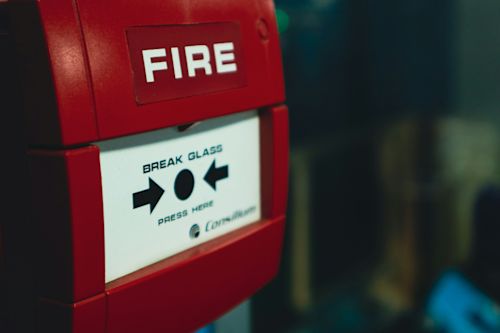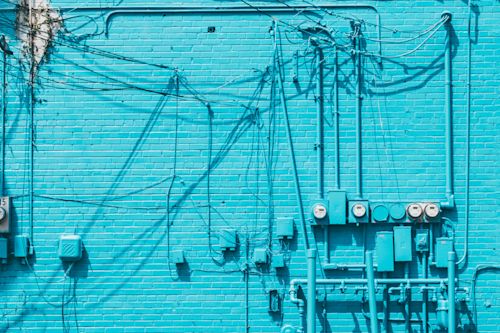
Safety in nursing homes is a top priority, especially as the elderly population continues to grow. Ensuring protected, serene, and well-organized environments means not only preventing accidents and illnesses but also providing dignity, respect, and quality of life for residents.
However, improving safety goes beyond installing technological devices or hiring qualified personnel—it’s a complex process that involves internal organization, ongoing staff training, open communication with families, and the adoption of up-to-date protocols.
Why Safety in Nursing Homes Is a Priority

Patient safety is an essential component of quality care in nursing homes. Given the high percentage of frail, vulnerable, and chronically ill residents, ensuring their safety is of paramount importance.
Preventable adverse events make up more than half of all injuries suffered, with the most common being falls, infections, and drug-related incidents. So, what are the main focus areas for building excellent safety?
Ensure Adequate Staffing Levels: Sufficient, well-trained staff are essential to ensure safety and proper care in any nursing home.
Provide Appropriate Supervision: Staff must regularly check on residents and ensure they receive necessary medical attention both day and night. If call devices fail or staffing is insufficient, residents' health could be at serious risk.
Enable Timely and Accurate Medication Administration: Since most residents are on multiple medications, staff must follow strict protocols to avoid dosage errors or harmful drug interactions.
Smart Access Control to Protect Residents and Staff

To maintain a high level of security, it’s important to continually assess and improve room access protocols.
In healthcare, access control falls into two categories: digital and physical. Digital access control protects patient and employee data by restricting access to software, records, and in some cases, even physical spaces. Physical access control regulates who can enter specific areas, helping to protect people, property, and sensitive zones.
Implementing access control ensures that only authorized individuals can access designated areas, enhancing the overall security of the facility.
Video Surveillance and Smart Monitoring

Video surveillance in nursing homes—often powered by AI—is an emerging trend that improves resident safety while supporting overburdened staff. These systems can detect incidents such as falls, unusual behaviors, or intrusions, enabling faster responses and more personalized care. At the same time, it is crucial to address ethical issues such as privacy and data protection.
Benefits of Smart Monitoring in Nursing Homes:
Enhanced Security: Real-time video analytics help detect incidents quickly, enabling immediate response.
Better Resident Monitoring: AI-enabled systems track resident behavior and send alerts when something seems off, supporting proactive care.
Reduced Staff Workload: Automated alerts allow staff to focus more on direct, human-centered care.
Improved Quality of Care: Monitoring insights can help identify trends and areas for improvement.
Abuse and Neglect Prevention: Surveillance can deter misconduct and provide evidence in case of suspected abuse.
Preventing Elopement and Supporting Dementia Patients

Preventing residents—especially those with dementia—from wandering off requires a combination of environmental design, proactive strategies, and personalized care.
Environmental Adjustments:
Secure doors, alarms, and window locks to minimize escape risks.
Use signs, color codes, and visual cues to reduce confusion.
Keep pathways free of obstacles to prevent falls.
Proactive Tools:
Employ tracking devices or smart wearables to monitor location.
Use motion detectors or bed-exit alarms to alert staff to risky behavior.
RFID tags and smart bracelets are also being used to improve safety and ensure secure, respectful monitoring of residents with cognitive decline.
Data Security and Digital Infrastructure

Cybersecurity in care facilities must encompass both physical safety and emotional well-being. Digital tools such as telehealth, smart monitoring, and automated systems can create a sense of security while preserving privacy and autonomy.
But these tools come with responsibility: it’s crucial to ensure staff are well-trained and that systems adhere to data protection regulations, especially when sensitive health information is involved.
Continuous Training and a Culture of Safety

Comprehensive fire and emergency safety training is particularly important in nursing homes, where many residents are immobile and unable to evacuate on their own. Additionally, language barriers among international staff can cause confusion in emergencies.
Training programs must go beyond regulations and include clear, practical examples of daily preventive actions that reduce risk and improve overall preparedness.
Toward Safer, More Connected, and More Humane Nursing Homes

As the global population ages, the role of nursing homes becomes increasingly vital. Creating safer, more connected, and more human-centered environments is no longer optional—it’s essential.
This transformation requires a multifaceted approach that integrates innovative technology, fosters strong human relationships, and prioritizes dignity, empathy, and autonomy in every aspect of care.
The future of elder care depends on our collective commitment to innovation, kindness, and respect.



